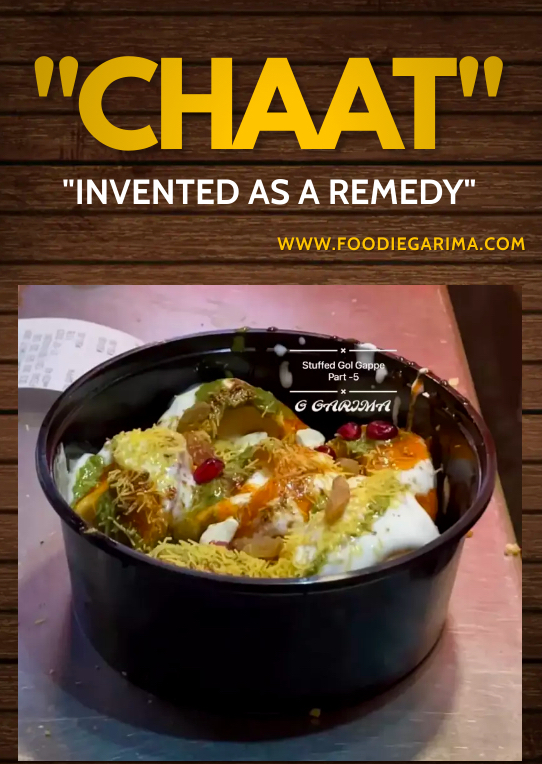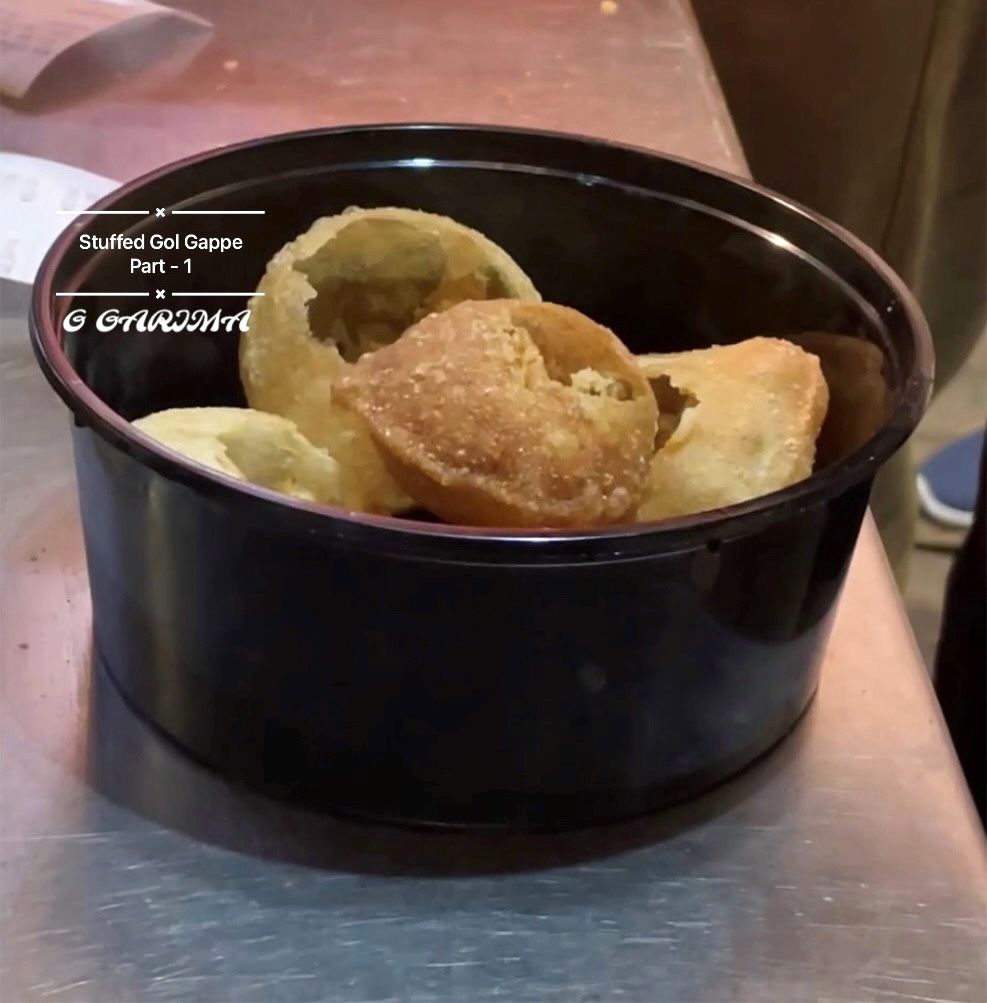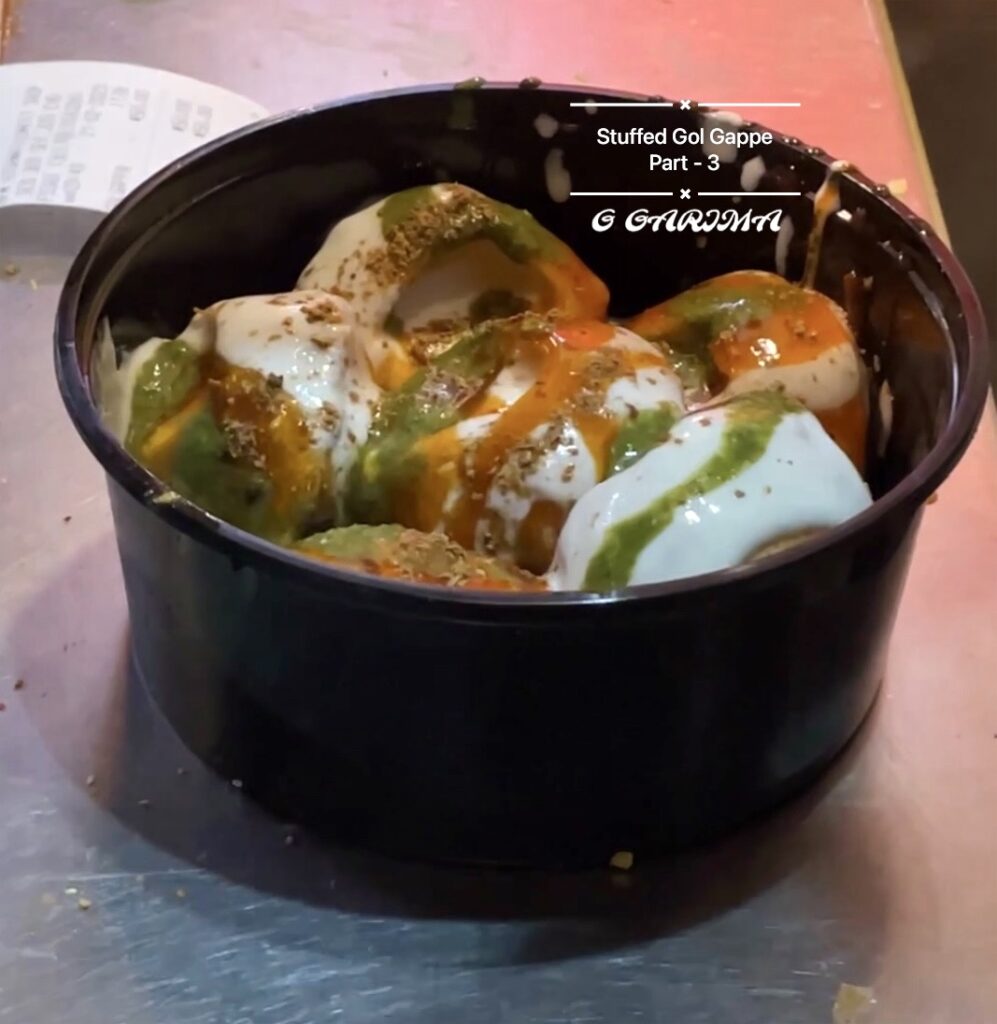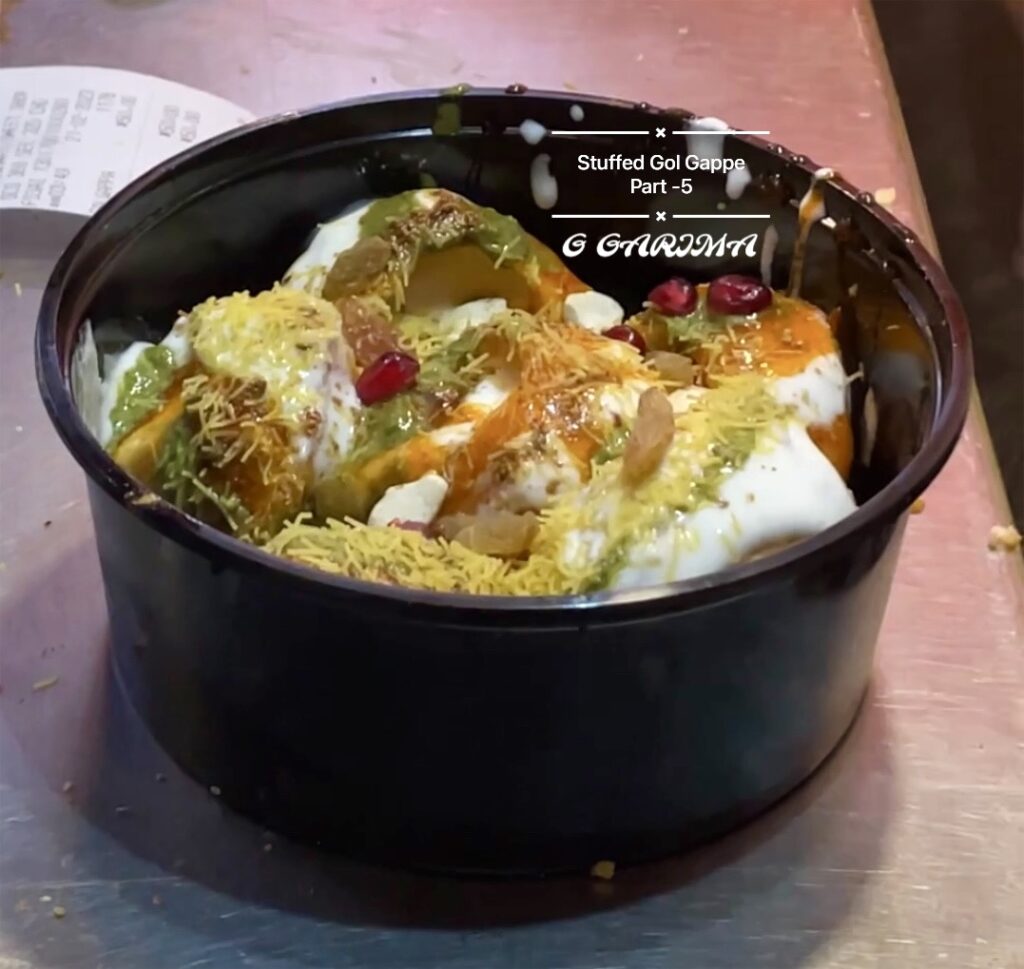8 February, 2023
CHAAT : INVENTED AS A REMEDY

Chaat : Invented As A Remedy
The aroma of freshly prepared street food is enough to stir excitement, and in India, one of the most popular choices is “Chaat.” Known for its irresistible mix of flavors, Chaat has become more than just food; it’s an experience that has traveled across borders and adapted in different cultures.
But where did it all begin? How did this vibrant dish take form, and why does it remain so beloved? Let’s dive into the Origins, Varieties, and the Evolution of this unique Indian delicacy.
“Chaat” refers to a diverse range of street snacks that originated In India and each variation of Chaat typically features a base of Fried Dough, Boiled/Fried Potatoes, complemented by a mix of spicy Chutneys, Yogurt, and Chickpeas. This creates a dish rich in layers of complex flavors, combining sweet, spicy, tangy, and savory elements, along with pleasing crunchy texture.
Etymology of the Name “Chaat”
The name “Chaat” is quite straightforward. It derives from the Hindi verb “Chaatna,” meaning “to lick” or “savor,” which is fitting because Chaat is so flavorful that it often leaves people licking their fingers. Chaat is meant to be devoured in a way that leaves no trace on the plate, just a delightful memory of tangy, spicy, and sweet flavors dancing on the tongue.
The Origins of Chaat
Chaat originated in India, particularly in the northern region, believed to have emerged around the 16th century during the Mughal era. The most widely told story attributes its creation to Agra, a bustling city thriving under the reign of Mughal Emperor Shah Jahan. However, the city’s rapid expansion and its location on the banks of the Yamuna River presented major public health challenges. Agra’s water supply, primarily drawn from the river, was not potable.
The alkaline and contaminated water of the Yamuna River was causing digestive issues for the people of the city, leading to widespread outbreaks of cholera and other waterborne diseases. The illness, marked by severe dehydration and digestive issues, began to affect not just the common folk but also the royal court, including the emperor himself.
Physician’s Remedy
In response to the health crisis, the emperor’s physicians (Shahi Hakim) were tasked with finding a remedy that could neutralize the effects of the polluted waters of the Yamuna River in Agra. Physicians of the royal court recommended consuming a combination of spicy and tangy food to boost the immune system and improve digestive health, countering the symptoms of waterborne diseases.
The logic behind this recommendation was rooted in traditional Indian medicine, which had long recognized the therapeutic properties of spices. Ingredients like Cumin, Black Salt, Ginger, and Tamarind were known for their digestive and detoxifying qualities.
The Invention of Chaat
To combat this, royal chefs began experimenting with ingredients that had natural cooling and digestive properties. They used simple, locally available ingredients like Yogurt, Tamarind, and Spices known for their medicinal value. These ingredients were not only flavorful but also easy on the stomach, making them accessible for both the royal court and the general populace.
The combination of spicy and and tangy flavors in Chaat worked on multiple levels:
- Spices like Cumin and Black Salt helped improve digestion and reduce bloating, both common symptoms of cholera.
- Yogurt provided cooling relief and helped balance the heat from the spices.
- Tamarind acted as a natural laxative, helping to cleanse the digestive system.
What started as a remedy quickly gained popularity among the court members and spread to the common people, where it evolved into a beloved street food.
Chaat Becomes a Staple
Though the invention of Chaat was born out of necessity, it quickly became. a staple in Agra and soon spread to other parts of Northern India. It was an efficient solution that eventually turned into an indulgence for the masses.
Street vendors started selling different varieties of Chaat, each adding their own regional twists to the dish.
As the popularity of Chaat grew, it became associated with joy and celebration, shedding its original association with illness. Today, Chaat is enjoyed across India and the world, but its roots in a city battling a health crisis remain a fascinating aspect of its history.
Though Chaat’s exact origin story remains part of culinary folklore, its invention was clearly driven by a need for a flavorful, digestion-friendly food that could be easily consumed by people of all social classes.
The Varieties of Chaat
Over the centuries, Chaat has taken on many forms, each offering a unique blend of ingredients and flavors. Here are some popular varieties:
Street Favorites
- Golgappa (Pani Puri) – Crispy Hollow Puris filled with Spicy Water and Tangy Tamarind Sauce.
- Aloo Tikki Chaat – Spiced Potato Patties topped with Yogurt, Chutneys, and Spices.
- Dahi Puri – A variant of Golgappa with Yogurt, creating a sweet and tangy explosion of flavors.
Regional Delights
- Kolkata Chaat – Known for its use of Tamarind and Mustard Oil, giving a distinct pungency.
- Delhi Chaat – Rich and indulgent, often featuring Fried Dough, Boiled Chickpeas, and lots of Yogurt.
- Mumbai Chaat – Famous for its Bhel Puri, a mixture of Puffed Rice, Chutneys, and Crunchy Sev.
Lesser-Known Varieties
- Dhokla Chaat – A unique combination of the Gujarati snack Dhokla, with Tangy Chutneys and Spices.
- Moong Dal Chaat – A healthier variety made from Sprouted Lentils, spiced with Chilli and Lemon.
- Sev Puri – A crispy base of Puri topped with Sev and Chutneys.



What Are Chaat Spices?
Chaat is known for its bold, tangy, and spicy flavors, which are achieved through a mix of Spices that enhance the taste of the ingredients. The key spices used in chaat are often referred to as “Chaat Masala” and include a blend of the following:
- Cumin (Jeera): Both roasted and ground Cumin are used in Chaat to provide a warm, earthy flavor. Roasting the Cumin Seeds before grinding intensifies their aroma.
- Black Salt (Kala Namak): This is one of the most distinctive ingredients in Chaat Masala. Black Salt has a slightly tangy taste that gives Chaat its unique flavor profile.
- Coriander (Dhania): Ground Coriander Seeds add a fresh note to the spice mix, balancing the more pungent spices.
- Dry Mango Powder (Amchur): This tangy powder, made from dried unripe mangoes, contributes a sour and slightly fruity taste to the dish, essential for the signature tartness of Chaat.
- Ginger Powder (Saunth): Ground dried Gingeradds a warm, slightly sweet spice to the Chaat Masala. It pairs well with the tangy flavors.
- Asafoetida (Hing): A pinch of Asafoetida is sometimes added for its strong, pungent aroma that gives a savory depth to Chaat.
- Red Chilli Powder: To bring heat and spice to the dish, Red Chilli Powder is used. The level of spiciness can be adjusted based on preference.
- Black Peppercorns (Kali Mirch): Freshly ground Black Pepper adds a sharpness and heat, enhancing the other flavors without overpowering them.
- Fennel Seeds (Saunf): Sometimes used in small quantities, Fennel Seeds add a sweet flavor to balance the tanginess.
- Carom Seeds (Ajwain): known for aiding digestion, Ajwain gives a slightly bitter and pungent flavor, which is commonly used in heavier Chaat dishes.
These spices are blended in varying proportions to create Chaat Masala, which is then sprinkled over the dish. The combination of spicy, tangy, salty, and slightly sweet flavors is what gives Chaat its mouthwatering appeal.
The Evolution of Chaat Over Time
As time passed, Chaat evolved with the availability of new ingredients and global influences. the basic foundation of tangy, sweet, and spicy remains, but modern varieties now include ingredients like avocados, quinoa, and even nachos for a fusion twist. Chaat has adapted to different tastes, especially in urban areas where food trends are consistently evolving.
Chaat in Indian Culture
Chaat holds a special place in Indian culture. It is not just a snack but an integral part of festivals, fairs, and family gatherings. Whether it’s a festival, or a casual evening stroll, enjoying a plate of Chaat with friends and family is a time-honored tradition. Chaat has the magical ability to bring people together, fostering connections through shared flavors.
Global Spread of Chaat
Chaat has crossed oceans, finding its way into global cuisine. Indian restaurants around the world feature Chaat on their menus, while international chefs have created fusion dishes that pay homage to its flavors. In countries like the UK, the US, and Australia, chaat has become a trendy snack, often adapted to suit local tastes with ingredients like hummus, guacamole, and jalapenos.
Nutritional Aspects of Chaat
While traditionally indulgent, Chaat can also be quite nutritious, depending on the ingredients used. Ingredients like chickpeas, yogurt, and tamarind provide protein, calcium, and antioxidants. Healthier versions can be made using baked or steamed ingredients rather than fried, and by minimizing sugary sauces.
Chaat as a Business
Street vendors have long been the backbone of the Chaat industry. In cities across India, chaat stalls are often family-run businesses passed down through generations. However, Chaat has also entered upscale restaurants, where chefs experiment with gourmet versions of the beloved snack, adding a fine-dining twist to this street food staple.
Making Chaat at Home
Making Chaat at home is a great way to customize the dish according to your taste. Start with a basic ingredient like potatoes or chickpeas, then add chutneys, spices, yogurt, and toppings of your choice. The key is to balance the sweet, spicy, and tangy flavors to create the perfect bite.
Ancient Records :
It is said that ‘Dahi Vada’ (Dahi Bhalla), which is a variety of Chaat, was first mentioned in ‘Sutra’ literature of 500 BC.
Food Historian, KT Acharya in his book ‘A Historical Dictionary Of Indian Food’ talks about The Manasollasa (a 12th Century Sanskrit text written by King Someshvara III). The text mentioned soaking of Vadas in milk, rice water or curd and later made a chaat with them. Probably ‘Dahi Vada’ is the Oldest Chaat.
Even the ‘Crispy Papri’ which adds the perfect crunchy texture to the ‘Chaat’ finds a mention in The Manasollasa in the 12th Century where it was called ‘Purika‘.
You would be surprised to know that ‘Puris’ which were called ‘Phulkis’ and looked similar to the ‘Gol Gappe‘ (‘Patase’) were available 2000 years ago as well, during the Maurya Empire. And commonly it is known that ‘Gol Gappe‘ (‘Patase’) emerged from these ‘Phulkis‘ (‘Puris’).
(Gol Gappe, 100 AD Maurya Empire)
In KT Acharya’s book it is mentioned how fruits, ginger, cumin and water were used to spice up water in the Buddhist era and how black pepper, tamarind and asafoetida were used in The Aryan era.